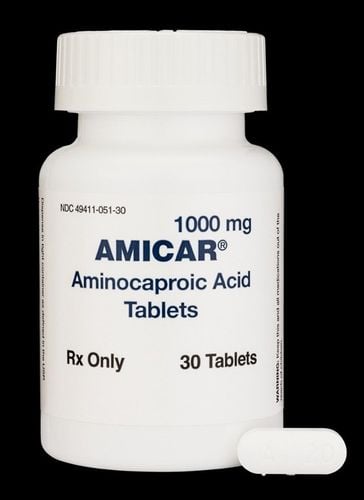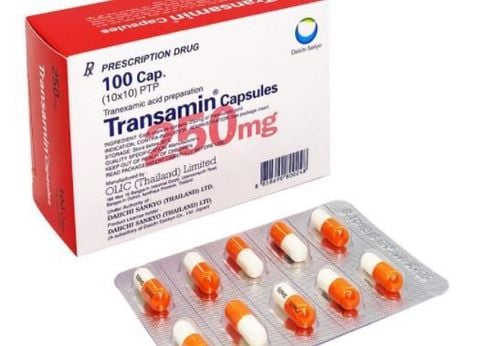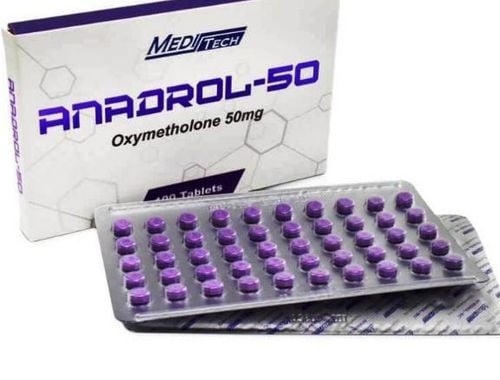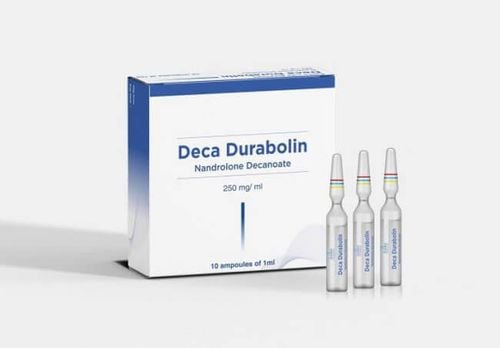This is an automatically translated article.
Eltrombopag is made in the form of film-coated tablets, with the main ingredient being Eltrombopag. The drug is indicated for use in the treatment of a number of blood abnormalities: low platelet levels, aplastic anemia,...
1. Uses of Eltrombopag
What is Eltrombopag drug? The active ingredient in the drug is Eltrombopag. Eltrombopag is a non-peptide thrombopoietin (TPO) receptor agonist. This component binds, activates the human TPO receptor, initiates proliferative signaling pathways that differentiate from bone marrow progenitor cells, and increases platelet production.
Indications for the use of Eltrombopag : Treatment of the following conditions:
Low platelet level; Blood abnormalities; Aplastic anemia ; Chronic immune thrombocytopenic purpura; Urinary incontinence is associated with chronic hepatitis C; Blood disorders. Indications for use of Eltrombopag:
People who are allergic to ingredients/excipients of the drug; Infants and young children.
2. Usage and dosage of Eltrombopag
Usage: Orally.
Dosage:
Spontaneous thrombocytopenic purpura: Adults: In patients not responding adequately to corticosteroids and immunoglobulins or splenectomy, the initial dose is 50 mg once daily, adjust the dose to achieve, maintenance. Maintain platelet count ≥ 50 x 109 cells/L. Maximum dose is 75mg/day. The patient may have to reduce the dose, stop the dose or stop taking the drug depending on the response of the platelets; Children: Children 1 - 5 years old, the initial dose is 25mg / time / day. For children 6 - 17 years old, the dose is the same as the adult dose. Aplastic anemia: In adults with severe disease, unresponsive to immunosuppressive therapy, unsuitable for hematopoietic stem cell transplantation, the initial dose is 50 mg once daily, titrated in 50 mg increments. every 2 weeks to achieve and maintain a platelet count ≥ 50 x 109 cells/L. The maximum dose is 150mg/day. The patient may have to reduce the dose, interrupt the dose or stop taking the drug depending on the response of the platelets. In patients with an independent tri-lineage response to transfusion of at least 8 weeks, the dose can be reduced by 50%; Thrombocytopenia associated with chronic hepatitis C: Adults initially on 25 mg once daily, titrated in increments of 25 mg every 2 weeks until an adequate response is achieved to initiate antiviral therapy. The maximum dose is 100mg/day. The patient may have to reduce the dose, interrupt the dose or stop taking the drug depending on the response of the platelets. Overdose: Symptoms of Eltrombopag overdose include increased platelet count leading to thrombotic/thromboembolic complications, transient bradycardia, rash, increased ALT and AST, fatigue,... Treatment includes the use of preparations containing metal cations (Ca, Al, Mg) to limit the absorption of Eltrombopag, and closely monitor the patient's platelet count.
3. Side effects of the drug Eltrombopag
Some side effects that patients may experience when using Eltrombopag include:
Serious: Thromboembolic events, cataract formation; Blood and lymphatic system: Leukopenia, anemia, splenic infarction; Heart: Chest pain, palpitations and dyspnea on exertion; Ears and Labyrinth: Dizziness; Eyes: Dry eye, retinal hemorrhage, fundus constriction, retinal discharge; Gastrointestinal: Nausea, vomiting, mouth ulcers, diarrhea, abdominal pain, flatulence, toothache, dyspepsia, dry mouth, constipation, abdominal distension, sore throat, stomatitis, hemorrhoids, abdominal discomfort, swelling of the tongue, intestinal motility disorders, esophageal varices, gastroesophageal reflux; General disorders and administration site conditions: Asthenia, chills, fatigue, burning, flu-like symptoms, malaise, pain, coma; Hepatobiliary: Jaundice, hyperbilirubinemia, liver cancer; Laboratory tests: Abnormal liver function, increased AST and ALT, increased alkaline phosphatase in the blood, decreased hemoglobin, white blood cells; Metabolism and nutrition: Peripheral edema, decreased appetite, iron overload, abnormal weight loss; Musculoskeletal and connective tissue: Arthralgia, myalgia, musculoskeletal pain, bone pain, extremity pain, back pain ; Nervous system: Headache, paresthesia, dizziness, memory impairment, hepatic encephalopathy; Psychiatric: Insomnia, anxiety, depression, attention disorders; Kidney and urinary tract: UTI, proteinuria, microthrombotic disease with renal failure, chromosomaluria; Respiratory, thoracic and mediastinitis: Tonsillitis, pharyngitis, influenza, nasopharyngitis, cough, epistaxis, upper respiratory tract infection; Skin and subcutaneous tissue: Alopecia, rash, itching, dry skin, petechiae, erythema, eczema, hypertension, skin discoloration; Other side effects: Syncope, severe hepatotoxicity, serum discoloration and interference with some laboratory tests (serum creatinine, total bilirubin),...
4. Be careful when using Eltrombopag
Some notes for patients to remember before and while using Eltrombopag:
Caution when using Eltrombopag in pregnant and lactating women, only if approved by a doctor; Eltrombopag should be used with caution in patients at risk for thromboembolism (chronic progressive liver disease, ATIII deficiency, antiphospholipid syndrome, malignancy, prolonged immobilization, surgery or trauma) injury, advanced age, obesity, smoking, use of oral contraceptives and hormone replacement therapy); Eltrombopag should be used with caution in patients of Asian ancestry; Use caution when using Eltrombopag in patients with liver and kidney failure, children; Eltrombopag can cause dizziness and lack of alertness, so if you have this side effect, you should not drive or operate machinery; At the start of Eltrombopag and monthly thereafter, the patient's blood count should be monitored (to check for differences in platelet counts); Liver function tests should be performed prior to initiating treatment with Eltrombopag, every 2 weeks during dose adjustment and monthly thereafter; Before treatment with Eltrombopag, the bone marrow should be examined with genetic aspiration cytology in patients with aplastic anemia, then every 3 months and every 6 months; At the beginning and during treatment with Eltrombopag, the patient's eyes should be examined. Monitor for signs and symptoms of cataract formation and venous thrombosis.
5. Eltrombopag drug interactions
Some drug interactions of Eltrombopag include:
Eltrombopag increases the risk of hepatic decompensation in patients with chronic hepatitis C who are taking interferon and ribavirin; Eltrombopag may increase serum concentrations of HMG CoA reductase inhibitors such as rosuvastatin, simvastatin; Serum concentrations of Eltrombopag may be reduced if Eltrombopag is co-administered with cyclosporin or lopinavir/ritonavir; Eltrombopag drug reduces absorption for multivalent cations such as Ca, Mg, Fe, Zn; Eltrombopag reduces plasma concentrations of meals with high calcium (e.g. dairy products) or moderate to high calorie/fat content. The advice for patients when using Eltrombopag is to strictly follow all the instructions of the doctor to ensure high treatment efficiency and avoid the risk of dangerous complications.
Follow Vinmec International General Hospital website to get more health, nutrition and beauty information to protect the health of yourself and your loved ones in your family.
Please dial HOTLINE for more information or register for an appointment HERE. Download MyVinmec app to make appointments faster and to manage your bookings easily.













